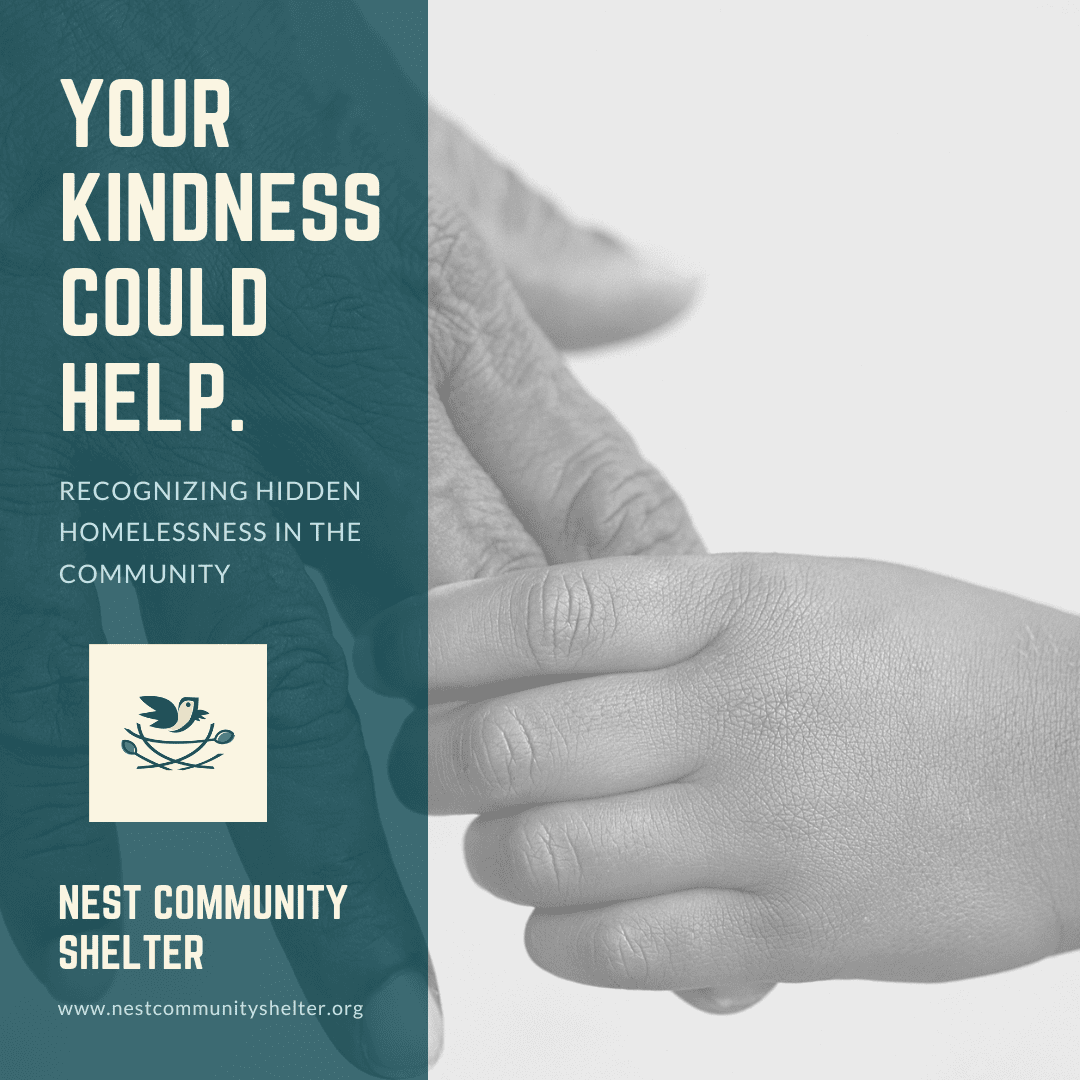
Throughout June, we are highlighting the topic of hidden homelessness in our community. We have talked about those living out of their vehicles, couch surfing, and motel living, but there are many more ways that individuals experience hidden homelessness in our community. Today, we want to explore some of these less visible forms of hidden homelessness that we often encounter in our guests’ experiences before coming to the shelter.
Abandoned Buildings:
Some individuals find shelter in vacant or derelict structures. While this might provide temporary protection from the elements, it often comes with significant safety risks and legal implications. This is not a safe or sustainable option for those experiencing hidden homelessness, especially as the weather in our area can be extreme. Abandoned buildings often are not weathertight and do not have electricity or running water, making the building unsafe to inhabit.
Hidden Outdoor Locations:
We commonly hear of guests setting up tents or makeshift shelters in secluded areas like forests, parks, or under bridges before seeking assistance with Nest. These locations offer privacy but lack basic amenities and safety. This form of extreme camping can be incredibly dangerous, as individuals are living out in the elements for long periods of time without the comforts of a modern-day campsite. There is a lack of clean water and the ability to cook and store food, among many other dangers that this way of living brings.
Overcrowding:
When multiple families or individuals squeeze into a space designed for fewer people, it’s a form of hidden homelessness. This situation can lead to stress, health issues, and instability. What might look like a way to spread out housing costs can often lead to housing insecurity and hidden homelessness.
24-Hour Establishments:
Some individuals without homes spend their nights in places like libraries, laundromats, fast-food restaurants, or stores that are open 24/7. After the pandemic, this has become increasingly difficult for those who rely on these establishments for shelter, as fewer local area establishments are open 24 hours a day.
Storage Units:
In desperate situations, people may turn rented storage spaces into makeshift living quarters despite the lack of proper facilities. While this might seem like a weathertight and temperature-controlled environment in some storage facilities, one thing remains: living out of a storage unit is not permitted. If an occupant is caught living out of their unit, they will be kicked out. This living situation is not sustainable.
Workplaces:
Some individuals may secretly stay in their workplaces after hours when they have nowhere else to go. Despite having a job, individuals in this situation may not be able to secure affordable housing, thus leaving them to secretly stay at their place of work after hours. Staying in the workplace after hours as a means of shelter is not only risky for housing but may put one’s job in jeopardy as well.
These situations often fly under the radar of official homelessness statistics, making it challenging to address the full scope of our community’s housing crisis. People in these situations may not consider themselves experiencing hidden homelessness in the traditional sense, but they lack the security and stability of a permanent home. We believe it’s crucial to recognize and address all forms of homelessness. By understanding the diverse ways people experience housing insecurity, we can develop more comprehensive solutions and provide better support to those in need.
We encourage our community members to be aware of these hidden forms of homelessness. If you know someone who might be in one of these situations, please reach out to us or other local resources for support. Together, we can work towards ensuring everyone in our community has access to safe, stable, and affordable housing.
Remember, homelessness doesn’t always look like what we expect. By broadening our understanding, we can create a more compassionate and inclusive approach to addressing housing insecurity in our community.



